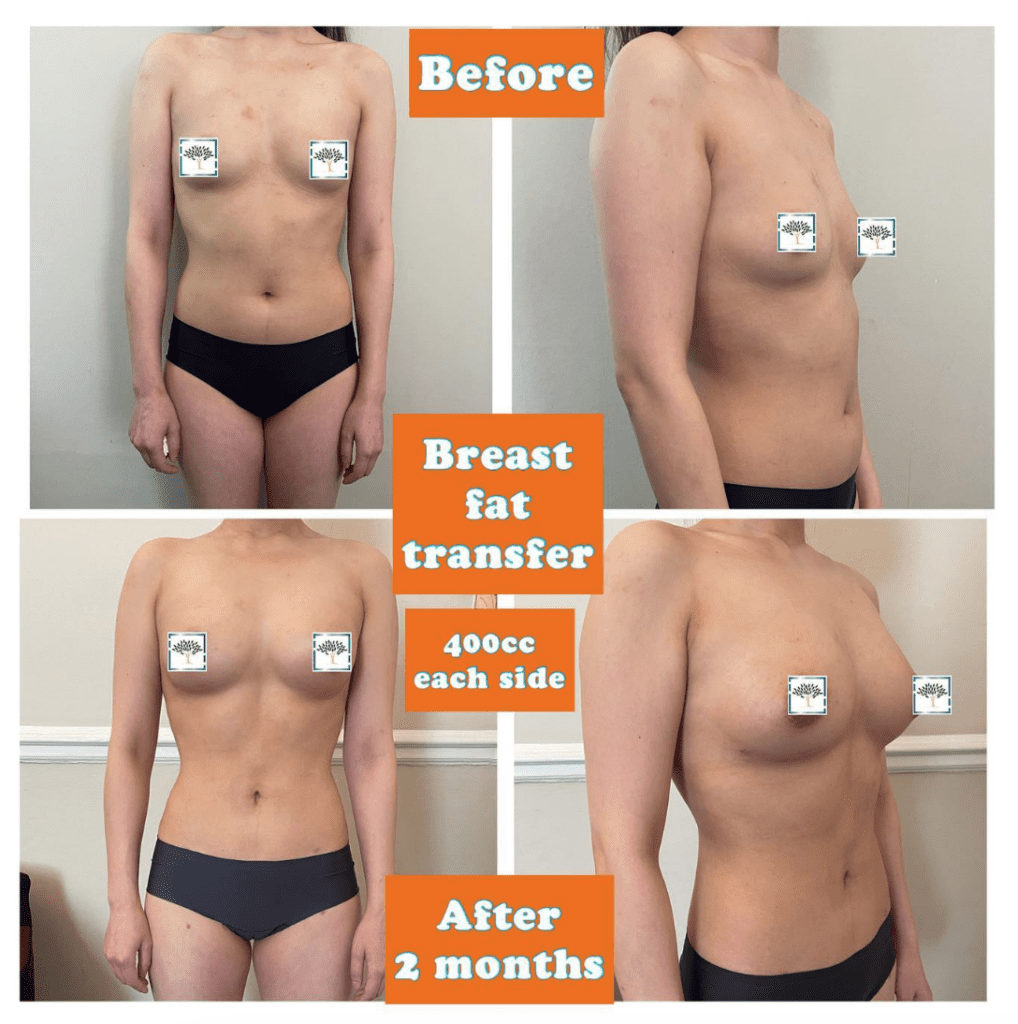One of the biggest questions patients have with cosmetic procedures is how long the results will last. It makes sense; you’re investing your money, time, and energy into a procedure, and you want to have all the facts before you decide. While some cosmetic procedures are permanent, others need maintenance or top-up appointments to maintain the result. What can you expect from fat transfer after 5 years, and how long do fat transfer results last? Let’s explore.
What is Fat Transfer Surgery?
Fat transfer or fat grafting is a procedure where your plastic surgeon uses liposuction to remove fat from one part of the body. The fat is then processed and injected into another part of the body. During the process, fat is separated from other fluids and blood. Your surgeon then injects the fat to add volume to a specific body part. The beauty of fat transfer surgery is that you can use it on several areas of the body:
- Breast augmentation fat transfer
- Brazilian butt lift
- Facial fat transfer
- Arms, legs, and chest

How Long Do Fat Grafting Results Last?
Although the precise time fat grafting result last varies from person to person, your results are permanent. The survival of the fat cells and the duration of the fat cells last depends on a few different factors. How the surgeon obtains, processes, and injects the fat impacts the final result.
It’s normal for not all fat cells to survive, so it makes sense that the fully rejuvenated look won’t remain the same forever. Despite the disadvantage that some fat cells may not survive, fat transfer is a natural method to enhance and add volume to the face, breasts, and other body areas.
The results from fat transfer surgery are permanent. But, it’s important to remember that to maintain those results, you need to stick to a healthy diet and regular exercise. Fat grafting doesn’t make you immune to the effects of weight gain. The best way to preserve breast augmentation fat transfer after 5 years is through making healthy lifestyle choices and following your surgeon’s post-operative instructions.
How To Ensure Your Fat Grafting Results Last
Fat is extremely delicate, and while your plastic surgeon will use the best techniques to harvest and re-inject it, about 30% of the fat transferred is re-absorbed in the first 6 to 12 months following the procedure. While it’s impossible to avoid, you can take measures to ensure that the remaining fat survives.
1. Wear The Right Garments
You will probably leave the hospital in a compression garment your doctor will ask you to wear for a certain period as you recover from the procedure. A compression garment aids in healing by minimising swelling and bruising and maximising the procedure results. Besides a compression garment, you must also ensure you wear loose-fitting clothes, at least in the treated area. Squeezing or putting too much pressure on the areas can harm the newly transplanted fat cells. Tight clothes also cause the body to re-absorb many transplanted fat cells. So, wear loose-fitting clothes the first weeks after your procedure.
2. Adjust Your Sleeping Position
Any cosmetic procedure will require you to change your sleeping position mainly to avoid straining the incision. For fat transfer surgery, you need to adjust your sleeping position to avoid putting too much pressure on the treated area. Putting pressure on the area will significantly reduce the viability of the transferred fat and, eventually, the expected results. For instance, if you’ve had a Brazilian butt lift, consider sleeping face down for at least two weeks. And if you want your breast or facial fat transfer after 5 years to look remarkable, sleep on your back the first few weeks after the procedure.
3. Stop Smoking
The newly transplanted fat needs to settle, which requires sufficient blood supply. Cigarettes contain chemicals that affect blood supply and the healing and repair of tissue. Smoking will slow down adipose tissue regeneration by withholding the nutrients and blood supply the transferred fat needs to survive. If you smoke, refrain from smoking as you recover from the procedure to give the newly injected fat the highest chance of surviving.
4. Consume A Healthy Diet
A healthy diet, in this case, means lots of healthy fats. Almonds, walnuts, salmon, extra virgin oil and avocado are essential to optimise your results. Consuming nutrient-rich foods will help ensure the survival of the fat.
5. Avoid Strenuous Activities
After your procedure, you won’t be able to do much, especially strenuous physical activities. Your surgeon will tell you to avoid intense or high-impact activities for at least 8 weeks as you recover. While at it, also avoid heavy lifting of any kind. Such activities could end up putting unnecessary pressure on the treated area, thus affecting your results going forth. Activities like walking are okay since they help enhance blood circulation to the treated area. Following the procedure, your doctor will give you the go-ahead to resume strenuous activities.
6. Drink Lots of Fluids
Keeping yourself hydrated is extremely important when recovering from a fat transfer procedure. Why? Drinking lots of fluids enhances the healing process and increases the chances of the fat surviving. And when it comes to fluids, avoid empty calories in soft drinks and avoid excessive salt, sugar and caffeine consumption. The best way to hydrate is by drinking water.
7. Maintain A Stable Weight
Fat transfer, as mentioned, guarantees permanent results when done right. Unfortunately, extreme weight changes will affect the results of the procedure. For instance, excessive weight loss will result in significant volume loss in facial fat transfer patients. Weight gain, on the other hand, won’t affect your facial fat transfer too much but may lead to unsatisfactory results following a Brazilian butt lift. After the procedure, adopt a healthy lifestyle of eating right and working out regularly to maintain the results.
How to Choose Between Breast Augmentation Fat Transfer and Breast Implants
Using fat transfer techniques for breast augmentation is becoming increasingly popular. When figuring out whether to get breast implants or breast augmentation fat transfer surgery, it’s essential to think about how long results last and the results you would like to achieve. Although results from breast implants are also permanent, the implants themselves have a shelf life. You will likely need to replace breast implants at some point, possibly after about 10 years. So, it’s important to weigh up the pros and cons of both procedures to help you determine the best procedure for you.

As fat transfer includes an element of liposuction, you can target multiple areas in one procedure. For instance, you could remove some fat from the abdomen and inject it into the breasts for a natural-looking size increase. But suppose you were looking for a larger breast size increase and were experiencing stubborn fat in the abdomen. In that case, you could combine liposuction and breast augmentation with breast implants. During your cosmetic surgery consultation, your plastic surgeon will discuss your options to understand how you can achieve a particular result.
Are you considering fat transfer surgery? Book an appointment today at the Harley Clinic, London.













